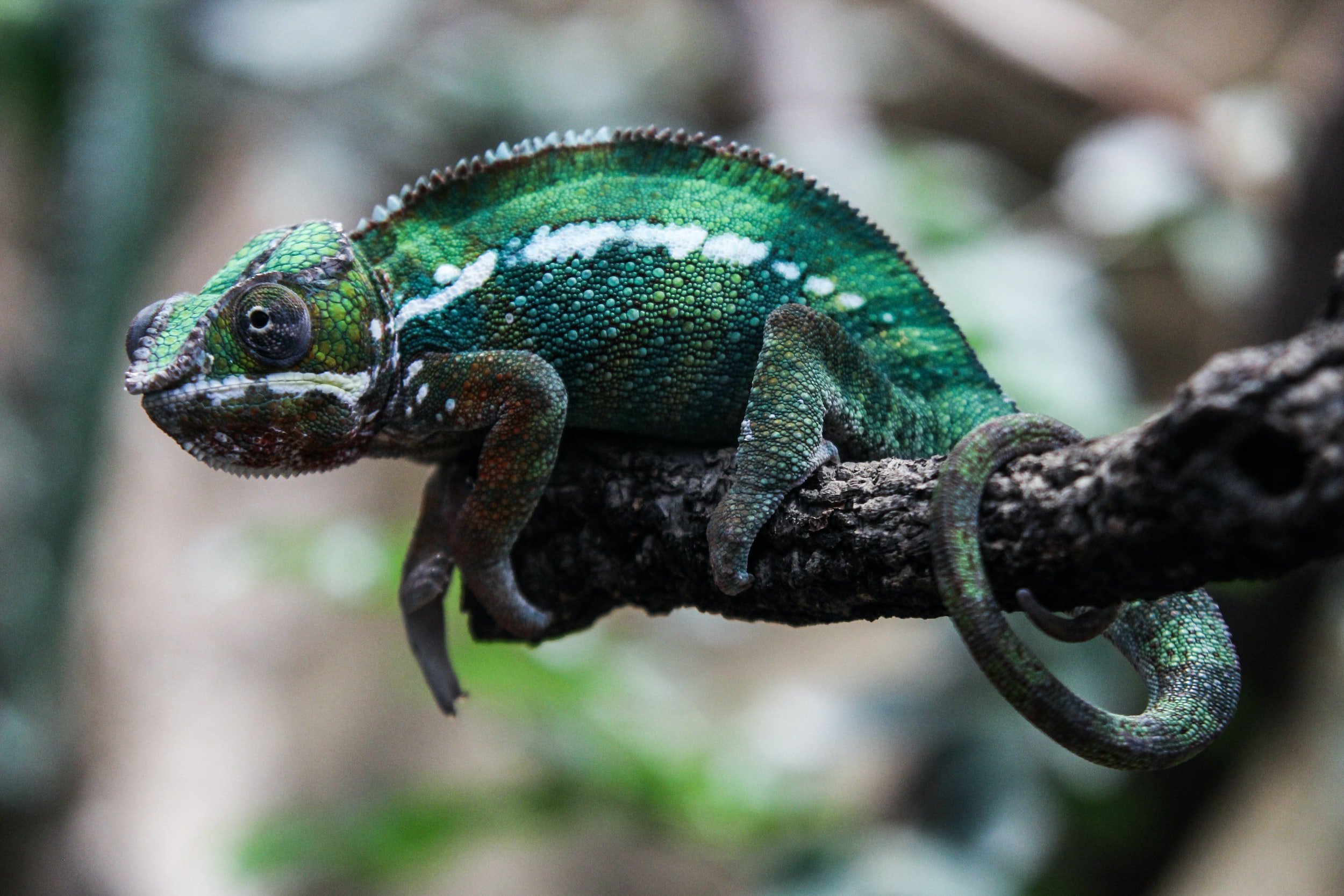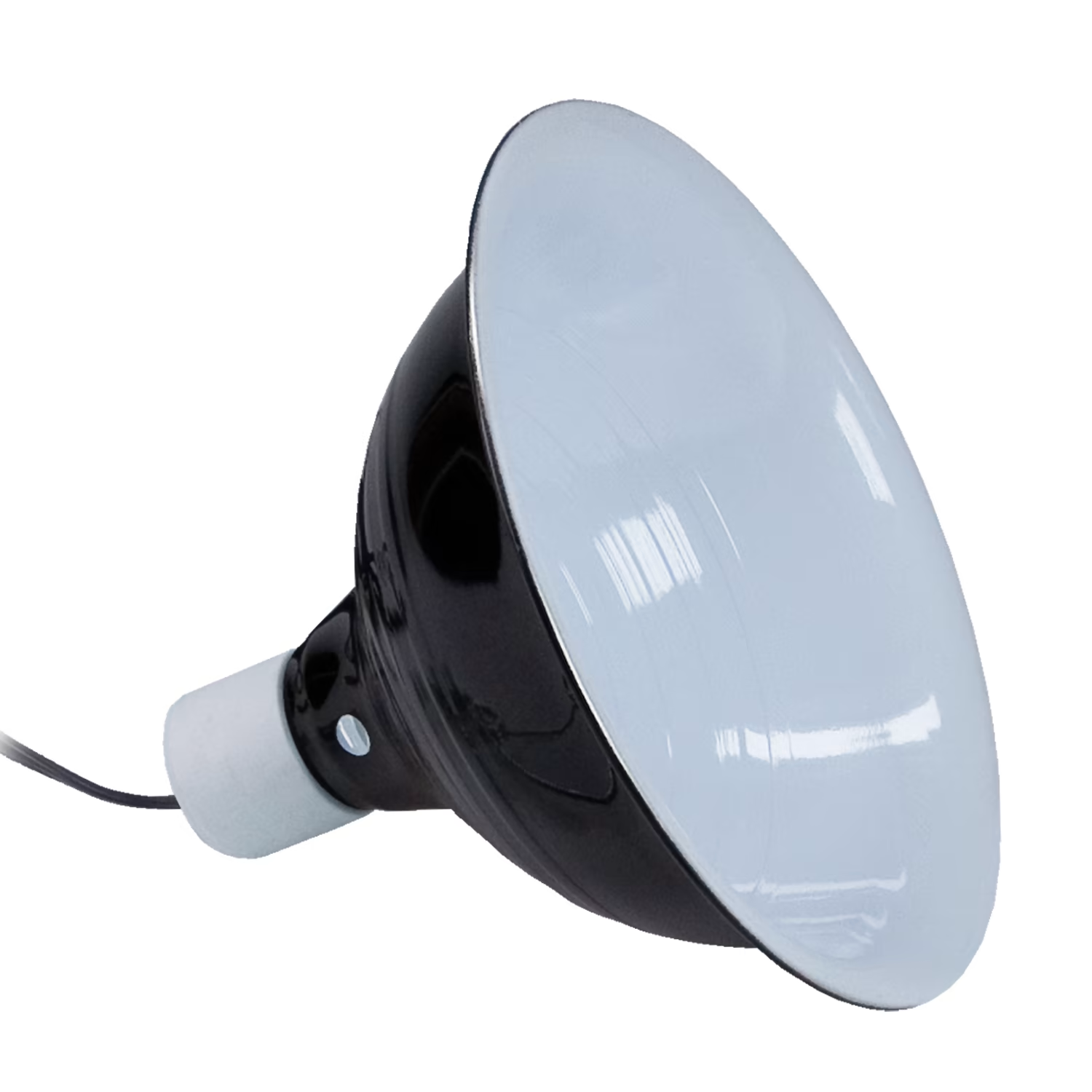
PANTHER CHAMELEON HUSBANDRY GUIDE
Habitat Specifications
When it comes to setting up the right habitat for your panther chameleon there are options, and choosing the right one can really make a difference in your husbandry routine. When selecting the right option(s) for your chameleon, there are a few factors you need to take into account. The first is the climate/environment the enclosure will live in. If you pick the wrong enclosure for your environment it can make caring for your chameleon difficult even deadly. Let's look at the options
Screened enclosure
Screen enclosures are appropriate when the ambient temperatures, as well as, the ambient humidity of your environment aligns closely with the care needs of your chameleon. The screen will allow for the climate inside of your enclosure to synchronize with the space around it. If you haven't guessed it, this is the most ideal situation, it is also not the most common. Most of us don't live in climates similar to panther chameleons’ natural habitat.


Glass enclosure
Glass enclosures are appropriate for situations on the other end of the spectrum from screen enclosures. When your environment is far removed from the ideal climate for your chameleon. Glass enclosures will hold onto humidity and make temperature regulation easier to control. Glass enclosures are not without risks. Without proper ventilation and airflow, as well as an understanding of how to maintain the correct humidity levels, glass enclosures could increase the chances of respiratory illness. However, if set up correctly, glass enclosures can be a wonderful tool. Chameleon Academy has a great write-up about glass enclosures.


Hybrid enclosure
Hybrid enclosures are the middle ground between screen and glass enclosures. They are appropriate for most situations and are my favorite option. The combination of screen and glass can make controlling the climate inside of the enclosure easier while allowing for airflow. There are many combinations of screen:glass ratio. The simple rule of thumb is, the more screen an enclosure has the more the climate inside the enclosure will match the ambient environment outside the enclosure.
Enclosure specifications
I recommend a minimum enclosure size of 2'x 2'x 4' for both male and female panther chameleons. Other sources will suggest smaller enclosures can be appropriate for female panthers, they aren't wrong, however, I disagree. The more room you can give your chameleons the better.
Create a network of climbing branches. You can use anything from dowels to sticks you find outside. When using sticks you harvested, make sure they are not from sap-producing trees or trees with toxic qualities such as eucalyptus. You also need to properly sanitize and materials you collect in nature for your enclosure.
Use lots of live plants that are chameleon safe. The Chameleon Academy has a safe plant reference list as well as a guide for selecting plants. Also, make sure to wash the leaves of the plants well, remove as much of the original potting soil as you can, and give them a few days to sit and clear any Residual pesticides before adding them to the enclosure. Many folks add plants to the enclosure in pots. Bioactive/naturalistic style setups allow you to fill the base of your enclosure with substrate, making it easier to include plants.
Quick note: Bioactive enclosure setups are my go-to top choice. The way plants are handled in this setting is a bit different. I won't get into how to set up a bioactive enclosure in this guide, but I felt it important to acknowledge them.
Water is critical to maintaining appropriate humidity levels and to hydrating your chameleons. Enclosures need to have drainage. This could be as simple as drilling holes in the bottom pan of your enclosure with a bucket to catch the excess dripping water or as nuanced as a bioactive setup.
Automatic misting systems can make caring for your Chameleon's humidity and hydration needs a breeze. Mist King and other companies offer full systems that are easy to set up but are pretty pricey. A quick youtube search and some creativity can give you everything you need to build your own misting system for a fraction of the price. Combine these systems with timers and you have a recipe for making your husbandry process a bit easier.
There are a few differences in the care needs between male and female chameleons. Both are so beautiful in their own ways and it's important to understand how to give each what they need to thrive.
Female chameleons need to have a lay bin incorporated into their enclosure. Females will lay eggs ranging from zero to three times a year, whether they have been mated or not. Providing a consistent lay bin will help to prevent egg-related health issues. A bin with dimensions of at least 16" L x 11" W x 4" H, filled with washed and consistently moist play sand will work perfectly. Make sure to drill drainage holes in the bottom to prevent water buildup. Also, egg-laying can be reduced or even eliminated by maintaining lower basking temperatures and avoiding overfeeding.
Lighting
Proper lighting is critical to the health of your chameleons. The ideal lighting schedule is 12 hours of light/12 hours of "night". The best way to accomplish this is with a timer set to turn on after sunrise and off after sunset. For example, my lights turn on at 8 am and off at 8 pm daily.


Panther chameleons need a linear T5 UVB light bulb and fixture, as well as a basking/heat lamp. The best UVB bulbs for panther chameleons in my opinion are 6% Arcadia D3 Forest bulbs. There are other reliable brands, but Arcadia bulbs last longer. Heat domes can be combined with a variety of different household light bulbs to produce heat. I prefer to use heat domes with a dimmer switch for greater temperature control. Note: high-efficiency bulbs will not produce a meaningful amount of heat. Focus on wattage, 65 watt bulbs can produce more than enough heat. The SHäP’s line of basking bulbs and light fixtures are perfect for chameleons.
Getting the right lighting setup will mean life and death for your chameleon. UVB makes it possible for chameleons to process calcium and prevent the dreaded Metabolic bone disease or MBD. Reptiles are cold-blooded creatures and are incapable of producing their own body heat. The basking spot provides the heat needed for food digestion and other metabolic needs.
The needs of the plants
It's important that you also take care of the needs of your plants. Chameleon waste can help with providing plants with food, misting will take care of most (maybe all) of their water needs, the only gap left is UVA light. Adding lights for your plants will lead to healthier and happy plants.
Humidity and temperature
Monitoring the temperatures and humidity in the enclosure is another critically important aspect of husbandry. It's important to balance the two correctly. To do this properly a digital hygrometer/thermometer is needed. I recommend using two, one placed higher in the enclosure and the second placed in a mid/low location.
Temperature: The goal is to establish a gradient with the warmest temperatures near the top of your enclosure with at least a 10-degree drop at the enclosure floor. Selecting the right temperatures can be nuanced but a general rule is to aim for a basking temperature between 85 and 90 degrees Fahrenheit and nighttime temperatures around 65 degrees
Humidity: The moisture levels in the enclosure are important to hydration for chameleons and it requires balance. Ideal daytime humidity levels should range between 40-60%, with nighttime levels between 70-100%. Avoid combining high temperatures and high humidity levels. This could be a recipe for respiratory illnesses. Maintaining higher humidity levels at night mimics the natural humidity fluctuations in the panther chameleons' habitat. This, combined with a dripper when needed, will help immensely with chameleon hydration. Also, adding a fan to promote ventilation/airflow will help reduce the risk of respiratory infections.

